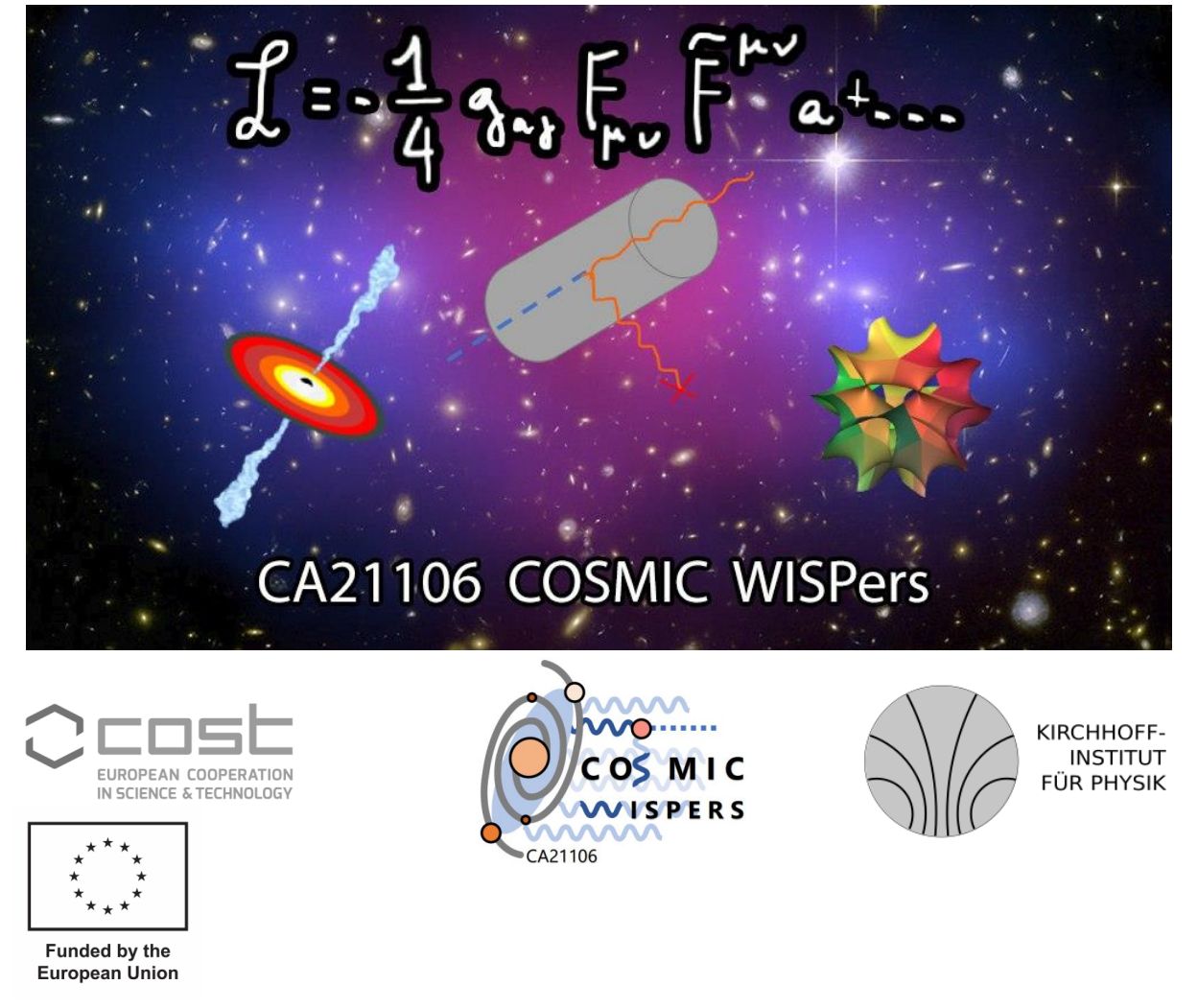Working Group Meeting of COST Action COSMIC WISPers (CA21106)
→
Europe/Zurich
01.403-01.404 (Kirchhoff Institute for Physics)
01.403-01.404
Kirchhoff Institute for Physics
Im Neuenheimer Feld 227
69120 Heidelberg
,
Description
Axions and other very weakly interacting slim (m << GeV) particles (WISPs) are easily accommodated in several extensions of the Standard Model of Particle Physics. Searches for WISPs are strongly motivated by our attempts to understand the nature of the dark matter and puzzling astrophysical and particle physics observations.
The Working Group Meeting will shape the activities of the COST Action "COSMIC WISPers in the Dark Universe: Theory, astrophysics, experiments" (CA21106). The objective of the meeting is to promote a discussion among the different communities involved in the project, with the immediate aim of reviewing the present experimental and theoretical status of WISP searches and plan further directions of investigation. Highlights related to the different Working Groups will be presentes as well as status report of each Working Group.
Registration
Registration
Participants
